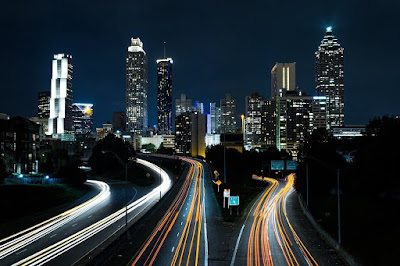Our planet is populated by 3.3 billion urban inhabitants and, by 2030, is expected to have more than 5 billion. To deal with this overcrowding, countries will have to adapt their spaces by creating smart cities, namely cities that combine new technologies with our new ways of life.
How to balance work and quality of life?
Borders are lower between professional and private life. The
digital workplaces are designed to foster the creativity of workers making feel
the worker is at work 'at home '. There is decentralization of offices,
regardless of the hierarchy of employees as well as the possibility to people
to work everywhere: in co-working spaces, in the offices of other companies or
home. These changes are part of what is often called the digital transformation
of businesses, namely to improve their performance and the well-being of
employees.
That's why Marie Schneegans has developed two years ago his
"Never Eat Alone" tool. The concept? Allow employees to a company who
do not necessarily share their lunch together in order to create the link and
no longer spend his break in front of his computer. In the light of the success
of Never Eat Alone, Marie went further in business with 'Work Well' well-being.
This tool allows to connect all businesses (Concierge, the canteen menu)
services while also bringing together partners such as Deliveroo, PopChef, cars
or laundry cleaning software... In
short, anything that can facilitate the life of an employee.
Our shopping malls will change face
Astrid Panosyan from Unibail Rodamco explains that the new
model of the stores has nothing to do with that for that last 25 years. In the
face of new modes of life of the citizens, the stores are brought to look more
and more like airports. What does this means?
Quite simply the places where everything is connected, but
also there where everything is thought '' business. '' "We must mix uses" ad Astrid
Panosyan, "gathering in one place shopping, home, hotel and work. Of the
places in life where people can do several things at the same time". She
then takes its cue from the Paris Philharmonic where we can find together, but
also conference rooms, hotels, specialty stores.
Who says smart cities also says smart energy
New construction must meet the new needs of the citizens.
But what makes that they are considered as the "smart cities" is
their construction in renewable materials, their comfort for users and
especially their low production and energy consumption. The problem is that to
manage a smart city, it takes some powerful data centers. Unlike connected
devices (computers, laptops) that consume 0.5 to 1 watt, data centers spend a
huge amount of energy, which is expected to increase by 200% in 10 years.
Olivier Biancarelli Director Solutions decentralized for
cities and the territories EnGie continues by evoking the importance of
transforming our transport. In France, they are responsible for more than 25%
of CO2 emissions. That is why public transport including are the key to
sustainable energy, the energy of tomorrow. It also explains the need for
Governments to invest in cleaner transport. It is estimated that today ' today
40% of public transport are electric but to go further in the use of clean
energy in developing gas or hydrogen transport.
There is also the proliferation of autonomous vehicles, on
land and at sea (such as the sea bubbles), allowing both to transport people
and goods, but also to create new uses.
In New York, the EnGo Planet company is working on a
mutation of the street lamps in the city. They are responsible for immeasurable
costs. Then to lower these costs, the city could make these lights making them
multifunctional. The same title that mobile phones that are televisions,
mini-computers, cameras... street lamps will soon offer other functions than
just illuminate the streets.
Did you like this article ? Then share it with your friends by clicking on the buttons below:



No comments: